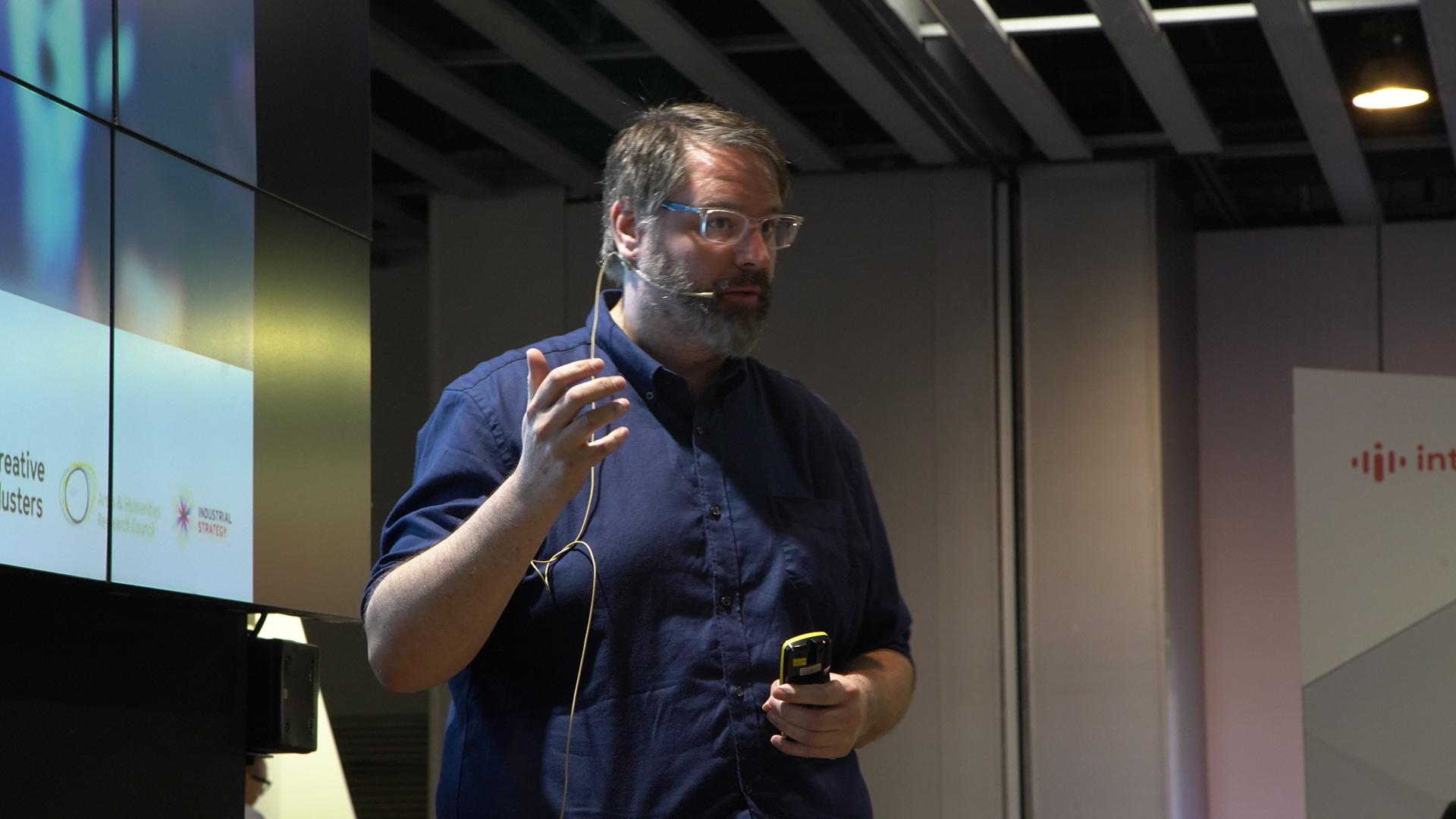It was a first for ISE this year, after making it’s Barcelona debut (historically it’s held in Amsterdam), and it was certainly a first for myself and Clwstwr cohort members Yassmine Najime, Painting Practice’s studio manager and, Andy Taylor, founder of Bwlb.
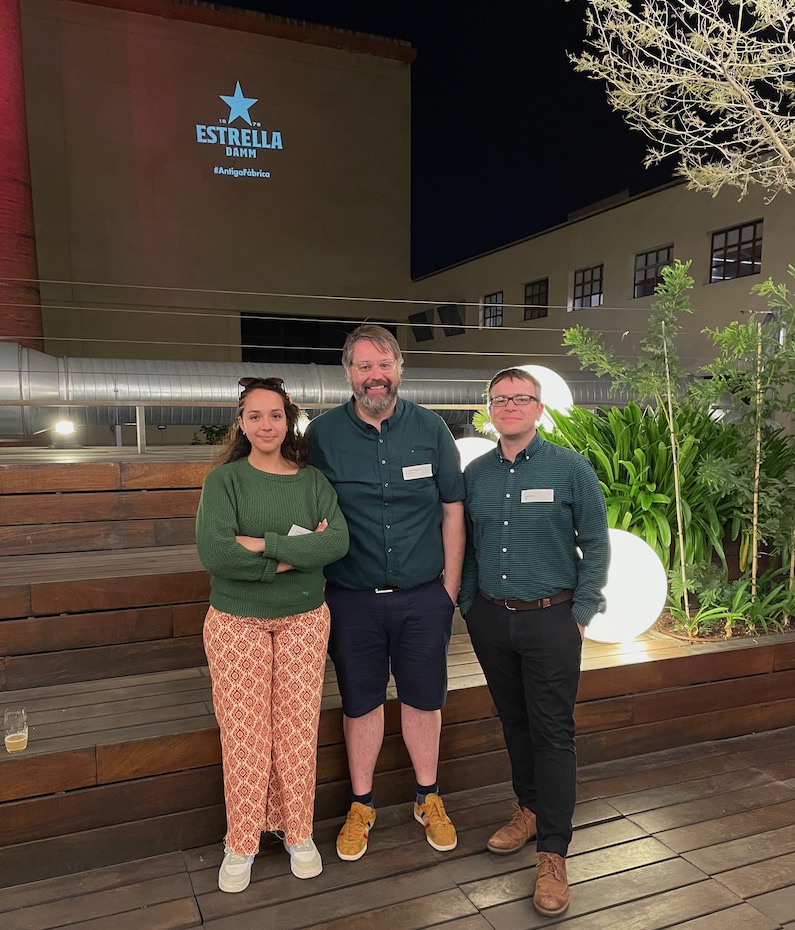
The conference was set over seven halls, with exhibitors, talks, workshops, and networking, a huge event covering everything in the audio-visual sector.
This year, albeit my first visit, you could easily identify several future trends and themes that have accelerated over the last few years due to the Pandemic. I’ve chosen a few things that kept cropping up to share with you:
Hybrid/ Home working
This was the biggie from all the major technology companies to small start-ups, offering unique solutions for homeworking; they all identified a common theme and called it ‘hybrid working equity’ – during COVID we made do with whatever we had available: laptops with rubbish speakers; microphones that don’t work; cats interrupting calls, and learning to wait for your turn to speak.
The companies were all eager to show their wears and demonstrate how smart microphones can live edit and reduce background noise; how cameras can focus on the human eye, know who’s speaking, and what to focus on. They now have high end solutions for all these hybrid working needs; integrated for those attending meetings in person as well as those attending online. For me, Google’s solutions to these needs had the best-looking features, including jazzy sculptured cameras that sat on tables and picked up who was speaking, ensuring they’re front and centre. There were plenty of other multi working tools in the pipeline, too.
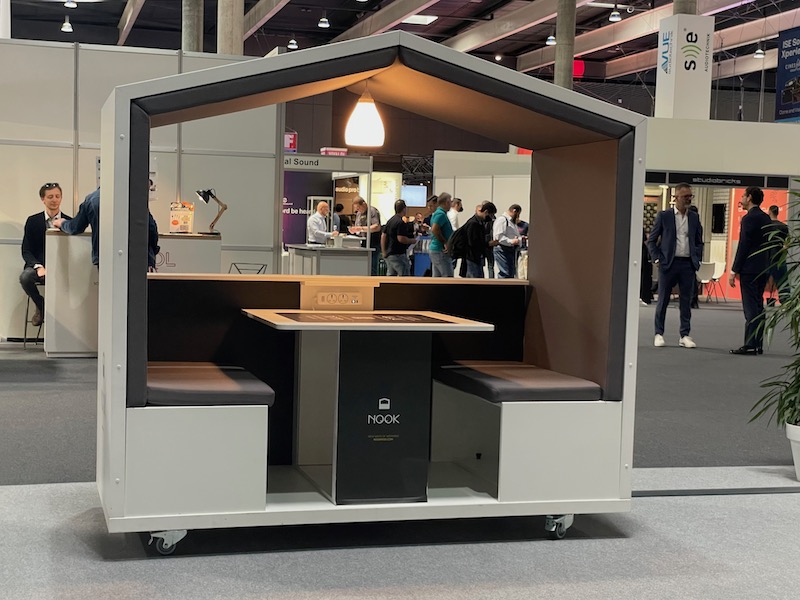
Screens and LED
The smarter and more energy efficient the better, they can roll up screens, bend them into shapes, embed cameras to track you, and the images were truly incredible. The science behind each pixel can be overwhelming, but the future is in screens and I imagine they’ll cover every panel possible.
Holograms also appeared heavily around the show, as well as transparent screens, but the applications seemed gimmicky for now anyway, showing a burger or person tracking was the main theme.
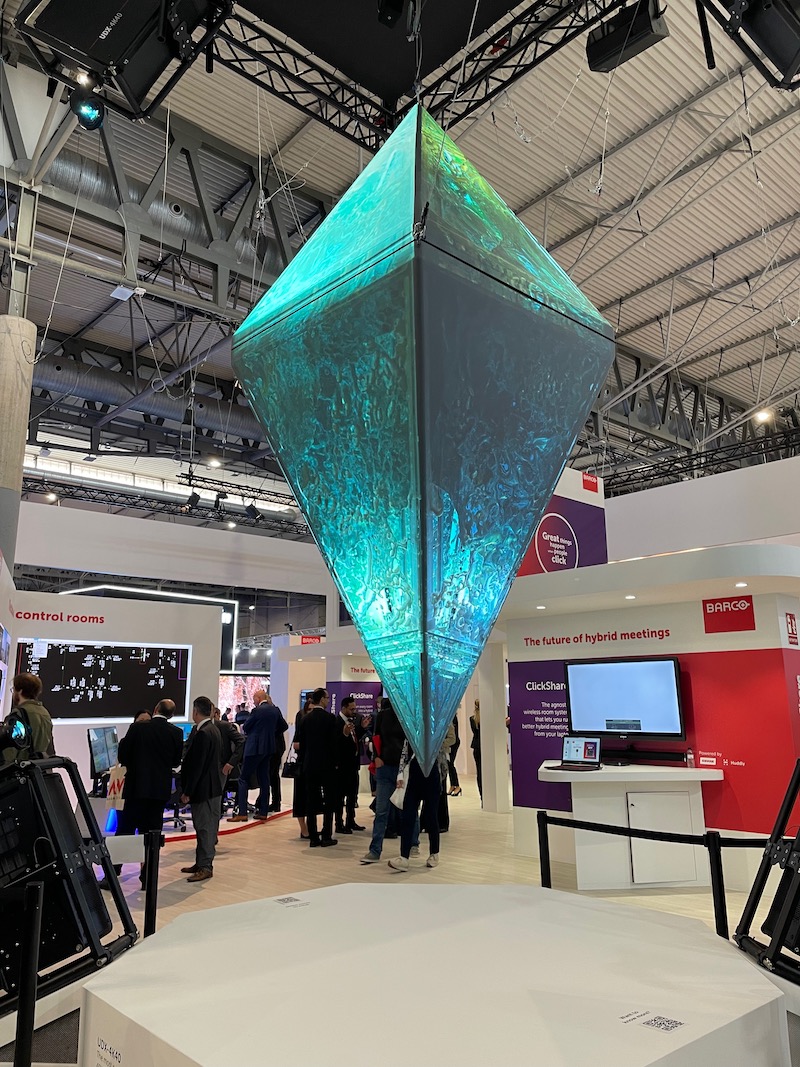
Audio
Showcased on the theme of Audio was spatial sound, directional sound, haptic sound, and sound that makes something immersive. Obviously, every company can deliver sound in a unique way and a better way than the next, but semiconductors are the king here, and the superior the quality of components the better. Sound can be heavily manipulated and manipulated like never before, and it’s a high economic driver for the future companies looking to bring us immersive experiences on a major scale. Sound companies are quickly catching on with new trends and are wanting to build their own software solutions that fit with virtual productions, the metaverse and immersive experiences.
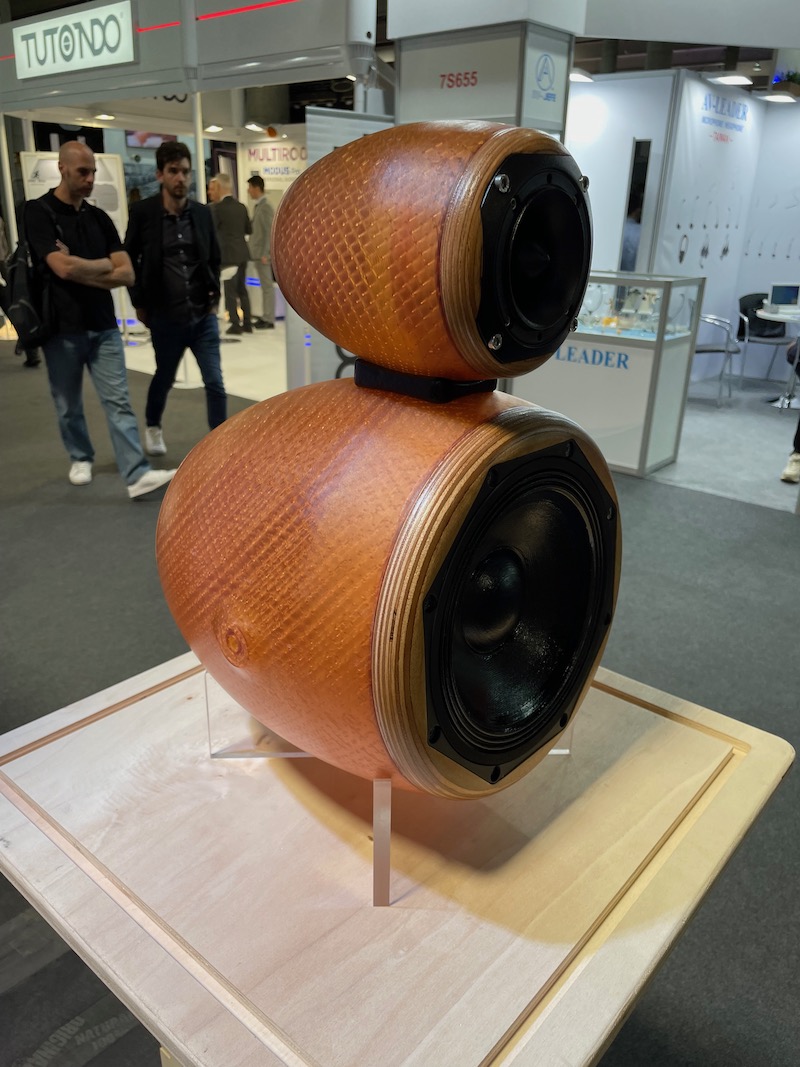
Virtual worlds
This covers virtual reality, MetaVerse, virtual productions and experiences; these trends were all packaged to give us an experience on another level.
Firstly, Virtual Reality, a strange tool but it’s sticking around. Unlike 3D TV, I saw a lot of VR headsets being used either to help showcase a product, service, experience or demonstrate home working, training and health solutions. The headsets and servers are certainly being upgraded, the application of VR is building, and as companies see the value in digital twins or Web 3.0 these VR experiences are providing wider IP than we first thought.
Metaverse is a strange concept at this stage, the equipment, software and communication companies providing broadband are ready to embrace it, but there is still doubt about the consumer or how people at home will use it. The wider Web 3.0 concepts will be here quickly, with blockchain contracting already in the supply chain. For example, the supply chain is using this system as it can’t be edited or manipulated, meaning if I’m part of the supply chain and I supply a component and all relating paperwork it’ll show what I added, when and who signed it off. If a document is missing then the blockchain can easily show who’s responsible and who signed it off, giving people in the supply chain accountability, this is just one example, and more are expected. Of course, NFTs' came up in conversation, but again the usage and longevity are still up for debate.
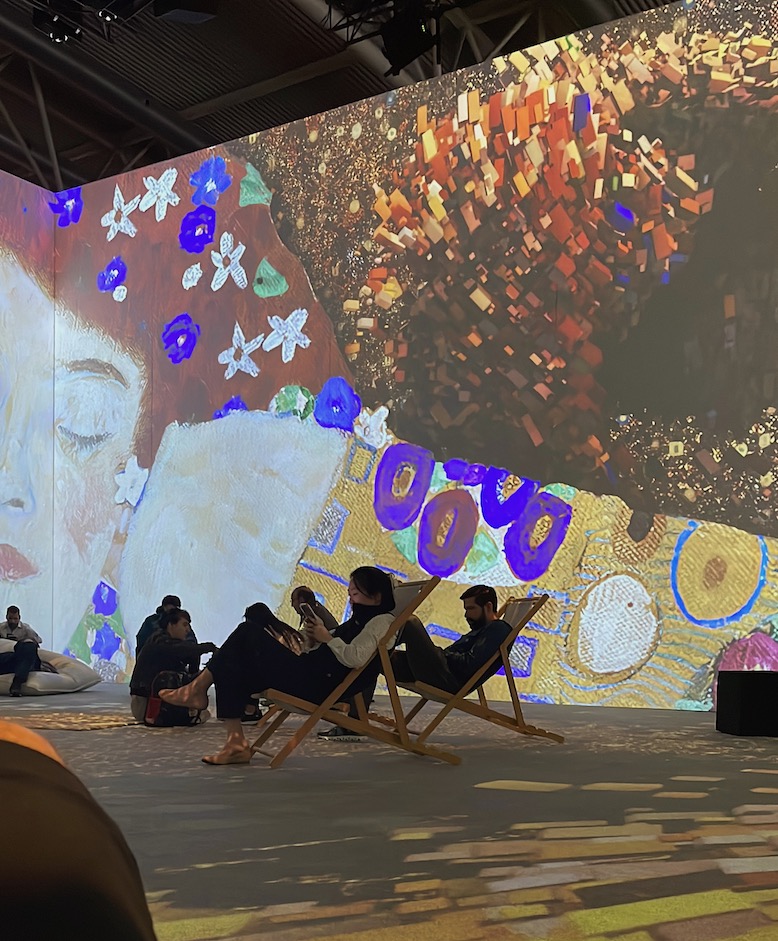
Virtual productions and the ecosystem that it entails is growing rapidly.
As I’ve mentioned, LED panels, spatial sound, pipeline software solutions are all in development for stand-alone applications, but now companies are actively developing software solutions for virtual productions. Holoplot is one company that are specifically designing standalone software solutions that intuitively communicate with Unreal Engine or Unity, previously their speaker configurations would work with virtual production engines as plug ins and in collaboration with other software solutions. Now companies are recognising the production world and giving users tools that have great support, upgrades and can truly utilise the equipment, therefore a Holoplot sound system with directional sound now has a software solution specifically for virtual production, and again others in the virtual production world are joining that race.
Finally, experiences that bring together all this technology and provide audiences with unique immersive experiences are around the corner. Illumanrium are one organisation that aspire to build immersive creative spaces around the world that use existing buildings like shopping centres and abandoned factories. Their vision is to produce high end artistic experiences and utilise these spaces to draw global artists and tourism opportunities for the local economies, consequently generating jobs and wider growth within clusters and regions that have this wealth of expertise on the doorstep. This is a very exciting proposition for those that are interested in truly immersive experiences.
Staying Connected Digitally
My final observation from ISE, and one that I think will continue to grow, is this hybrid approach to staying connected using technology, whether this is through social media channels, the internet of things (IOT), hybrid working and communication, all the way through to new digital worlds. Keep an eye on the big software developers, new innovations in computing power and technology, or a kit that will take us to realms we didn’t think existed.
Thank you, Barcelona, for having us. The city is well worth a visit if you’ve never been before!

